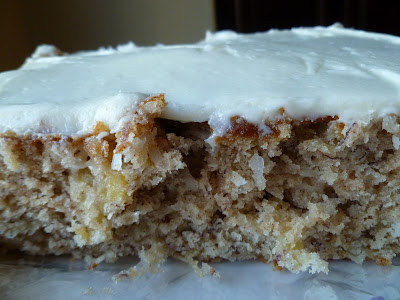You might remember my earlier attempt to take a simple brownie recipe and make it more decadent by having an Oreo crust for the bottom layer, covering it with a layer of caramel and putting the brownie on top of it. That attempt didn't turn out as well as I would've liked so I decided to try again to coincide with my niece's visit from college for the weekend. Then I could load her up with most of it to take back to her friends in her dorm.
This stab at brownie decadence came out better than the last time. I think I hit on the right ratio of Oreo cookie crumbs and butter - use 2/3 of a package of Oreos (the regular size package, regular Oreos, no double filling), process in the food processor until they're all crumbs, add half a stick or 4 tablespoons of melted and cooled butter and mix until you have a uniform consistency with the crumbs. Pat that into a 9 x 13 pan lined with foil sprayed with nonstick cooking spray and smooth into an even layer. Then I melted a 14-ounce package of Kraft caramel bits with a little milk. I didn't measure the milk but added enough to get a thin liquid consistency. You don't want the caramel to be too thick or too chewy when it cools.
Then I chopped up the remaining Oreos in the package, mostly because I knew if I kept them, I'd eat them all. Instead of keeping temptation around, I added the chopped up Oreos to the brownie batter and poured that on top of the cookie crust and caramel layers. Because of the two bottom layers, testing for doneness using the toothpick test is a bit tricky because if you push the toothpick straight down, it'll likely always come up too moist because it's also picking up the caramel layer. Instead, I angled the toothpick so I was mostly testing the brownie layer instead of hitting the caramel layer. These did take a bit longer to bake than I expected and a crust formed on top which I wasn't wild about since I don't like crusts on my brownies. But overall, I was much happier with this version than the last time I tried to make this combo. The brownies were fudgy without being too gooey and the caramel kept things moist. The caramel wasn't as pronounced as I expected so next time I might try adding more caramel or swirling some of it through the brownie itself as well as having a caramel layer on top of the Oreo cookie crust.
My niece took some back to share with her friends in the dorms. Their feedback after taking the first bite: "Oh. My. God." I'll take that as an endorsement, lol.
6 ounces unsweetened chocolate
12 tablespoons (1 ½ sticks, 6 ounces) unsalted butter
5 large eggs
2 teaspoons vanilla extract
½ teaspoon salt
2 ½ cups (17 ½ ounces) sugar
1 1/3 cups (5 ¾ ounces) unbleached all-purpose flour
Optional add-ins: nuts, chocolate chips, mini marshmallows, caramel
1. In a medium-sized saucepan, melt the chocolate and butter together over low heat. Set aside to cool slightly.
2. In a large mixing bowl, beat the eggs, vanilla, salt, and sugar together until light and fluffy.
3. Preheat the oven to 375°F and lightly grease a 9 x 13-inch pan.
4. Stir the flour into the chocolate and butter mixture. Fold the chocolate batter into the egg mixture, stirring to combine. Stir in optional ingredients, if using.
5. Spread the batter in the pan. For an extra-glossy top, brush with 1 tablespoon milk. Bake the brownies for 35 minutes; the top should be crisp but a toothpick inserted in the center will come out coated with chocolate. Remove the brownies from the oven, and let them cool for several hours before cutting into squares.

























